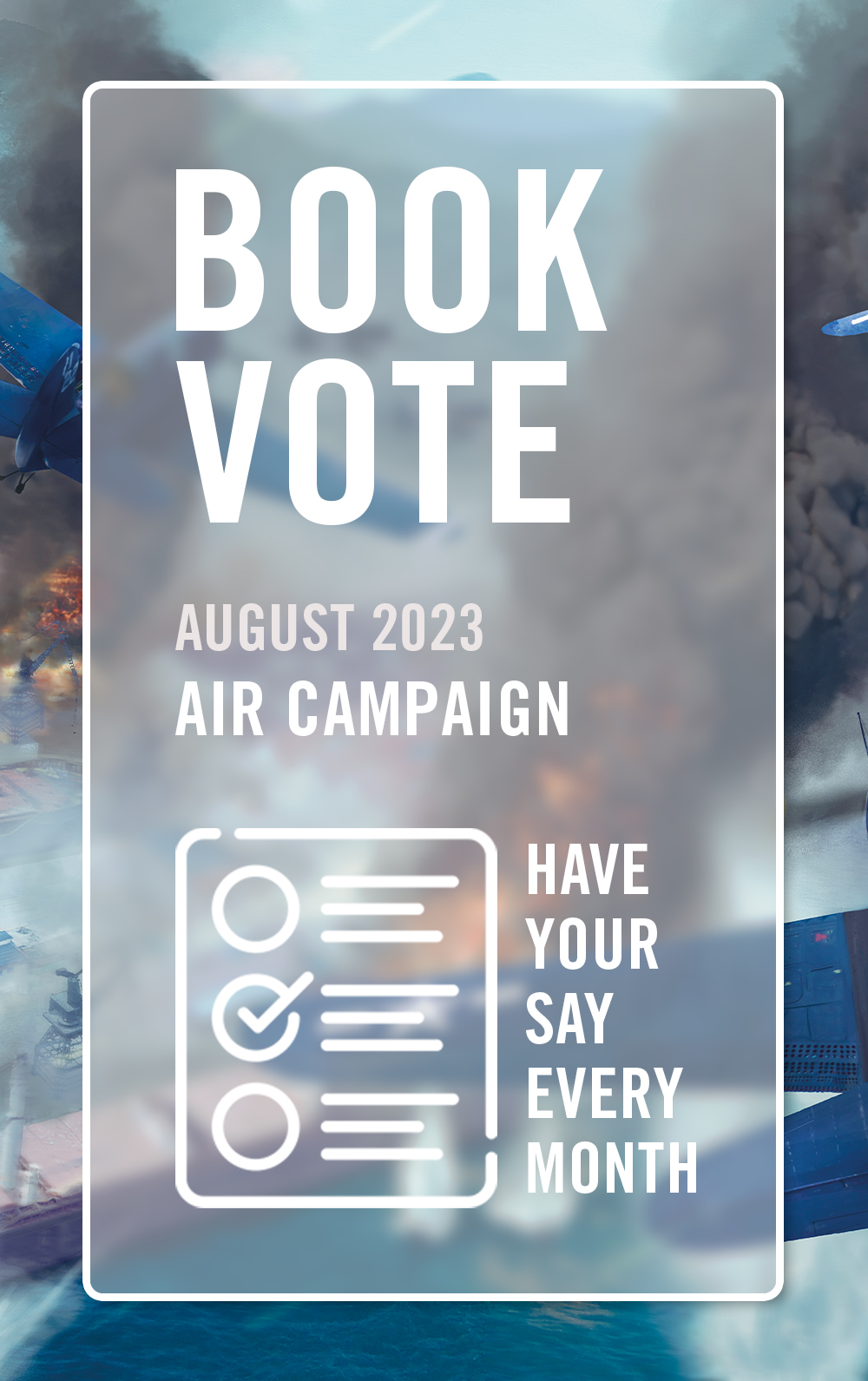
This month's book vote sees five Air Campaign titles battling for your support. Read the full descriptions and have your say by visiting the Book Vote Page. Plus, check out the results of last month's Combat Vote.
Operation Ke 1943: Air superiority in Japan’s evacuation of Guadalcanal
Operation Benedict 1941: The RAF expeditionary force in Russia
War of Attrition 1967–73: Jet duels over Sinai
Baedeker Blitz 1942: The Luftwaffe’s vengeance campaign
North Africa 1942–43: Airpower from Operation Torch to Tunisia
Operation Ke 1943: Air superiority in Japan’s evacuation of Guadalcanal
Japan’s evacuation of its last 10,000 troops on Guadalcanal involved a risky, destroyer-led naval operation – the success of which would depend on an air superiority campaign to temporarily regain control over the evacuation area. The operation was unique in the degree to which JAAF units were involved in a naval operation – the 1st, 11th and 45th Sentai – and Japanese floatplanes also played a huge part, particularly in night harassment raids.
Operation Benedict 1941: The RAF expeditionary force in Russia
Soon after the German invasion of the Soviet Union began, Britain sent the first of the Arctic Convoys eastwards to aid its new ally. Included in an early shipment was the Hurricane-equipped No 151 Wing RAF, charged with defending the convoys’ vulnerable terminal port of Murmansk and training the Soviets on its first Hurricanes, which would soon be shipped in large numbers under Lend-Lease. By the time the wing left in late 1941, leaving their aircraft to the Soviets, they had proved the Hurricane’s value on the Eastern Front.
War of Attrition 1967–73: Jet duels over Sinai
Between the overwhelming Israeli victory of the 1967 Six Day War and the outbreak of the Yom Kippur War in 1973, war continued over the Sinai Peninsula, with air forces and air defences at the heart of the conflict. As both sides rearmed and modernized, new equipment and technology were brought onto the battlefield, with Israel’s first F-4s and HAWK missiles seeing action, and the Soviet Union not just supplying equipment but also air defence troops to its Middle Eastern allies.
Baedeker Blitz 1942: The Luftwaffe’s vengeance campaign
As Bomber Command’s strategic campaign ramped up in 1942, with new heavy bombers conducting firebombing raids on historic German cities, the Luftwaffe was ordered to retaliate. During 1942 heavy and destructive raids were mounted against cultural targets – Bath, York, Canterbury and Exeter – but also against some strategic targets such as Hull and Cowes. However, British defences were rapidly improving, with new radar-equipped nightfighters now operating.
North Africa 1942–43: Airpower from Operation Torch to Tunisia
The last months of the war in North Africa saw the debut of Anglo-American combat operations on land. While the US forces were relatively new to the war, the campaign could draw on the lessons from three years of fighting in the desert, with Eighth Army and the Desert Air Force having developed flexible, coordinated airpower doctrines. Following the amphibious assault of Operation Torch, the last months of the Tunisia would see the formation of the joint Northwest African Air Forces, and this tripartite Allied air command would be replicated in major operations through the rest of the war.
Last month, we asked what you would like to see published in our Combat series. Thank you to everyone who voted and provided feedback. The results gave us a clear winner. Check out the full results below!
Caesarean Roman Soldier vs Pompeian Roman Soldier: Caesar’s Civil War (49–45 BC) 17%
Swedish Soldier vs Imperialist Soldier: Thirty Years’ War (1630–35) 39%
English Soldier vs French Soldier: War of the Spanish Succession (1704–09) 11%
Prussian Infantryman vs Russian Infantryman: Seven Years’ War (1757–59) 15%
British Soldier vs French Soldier: Peninsular War (1812) 18%


Comments
You must be logged in to comment on this post. Click here to log in.
Submit your comment